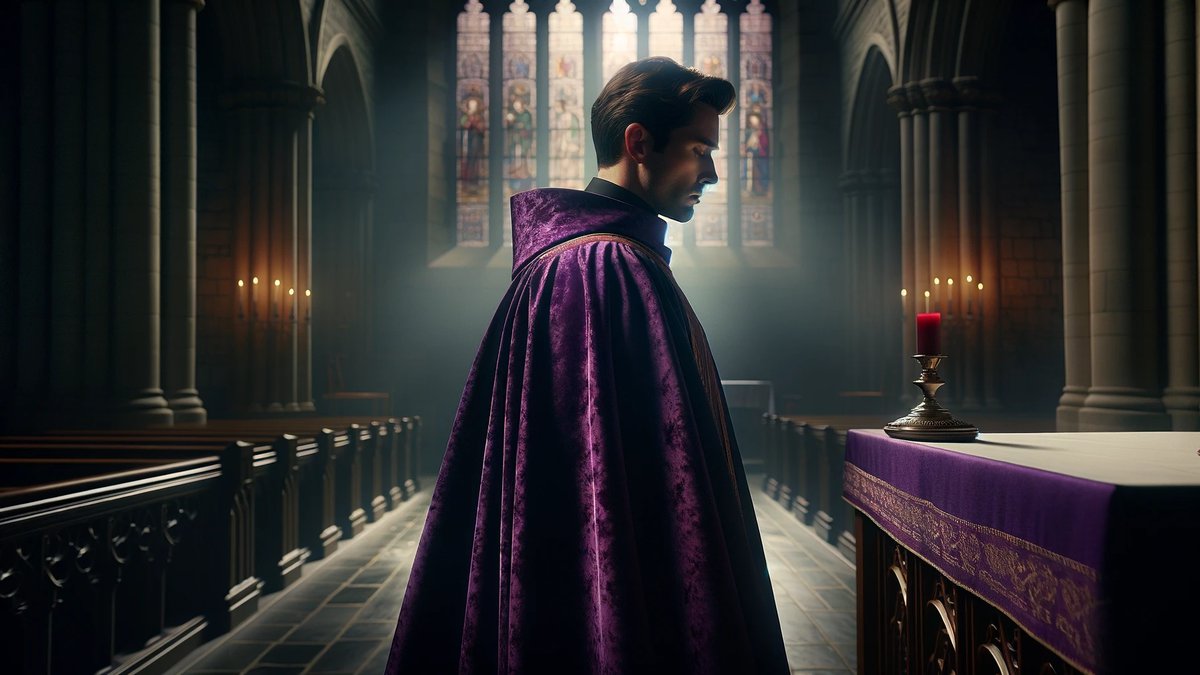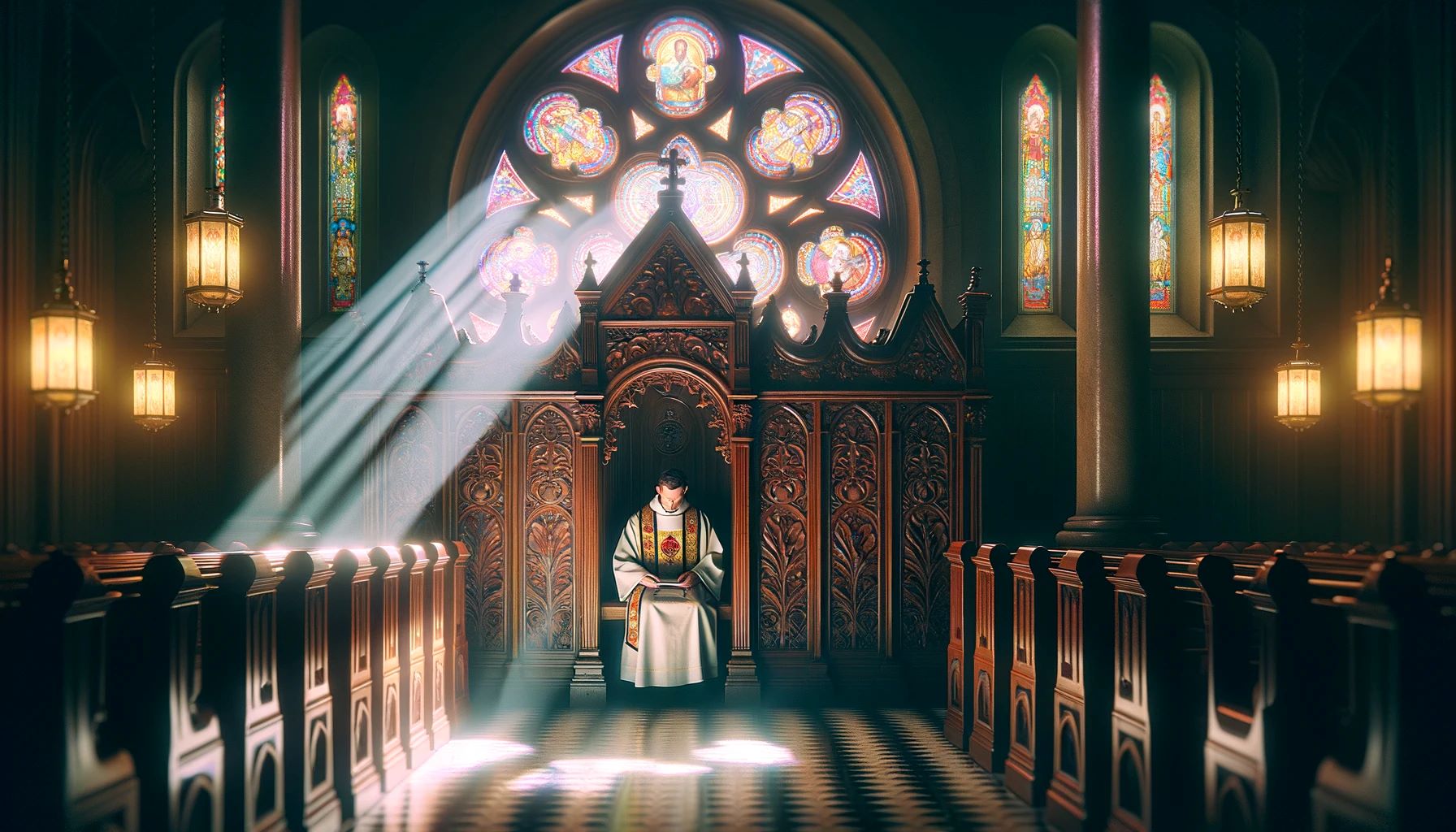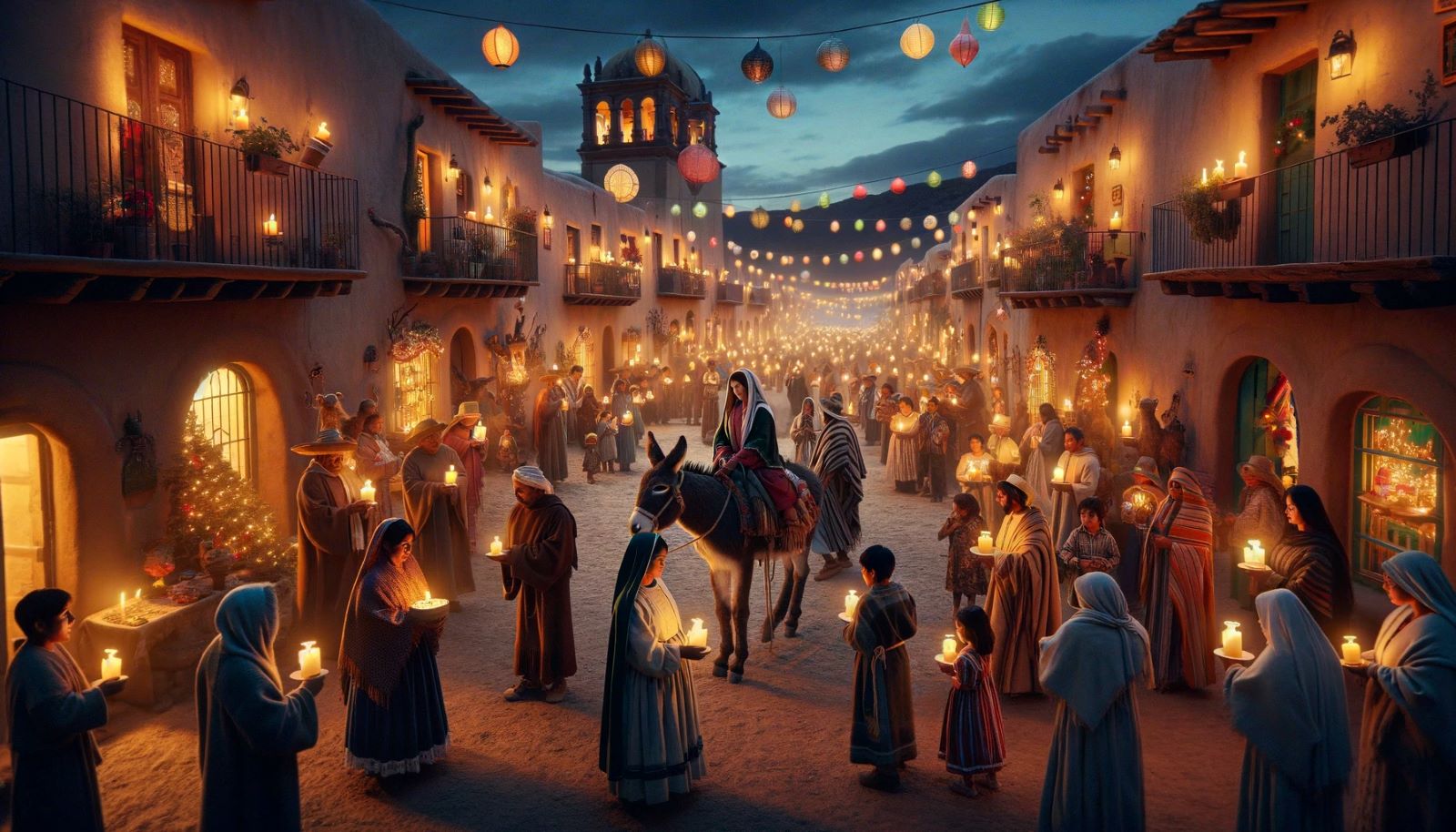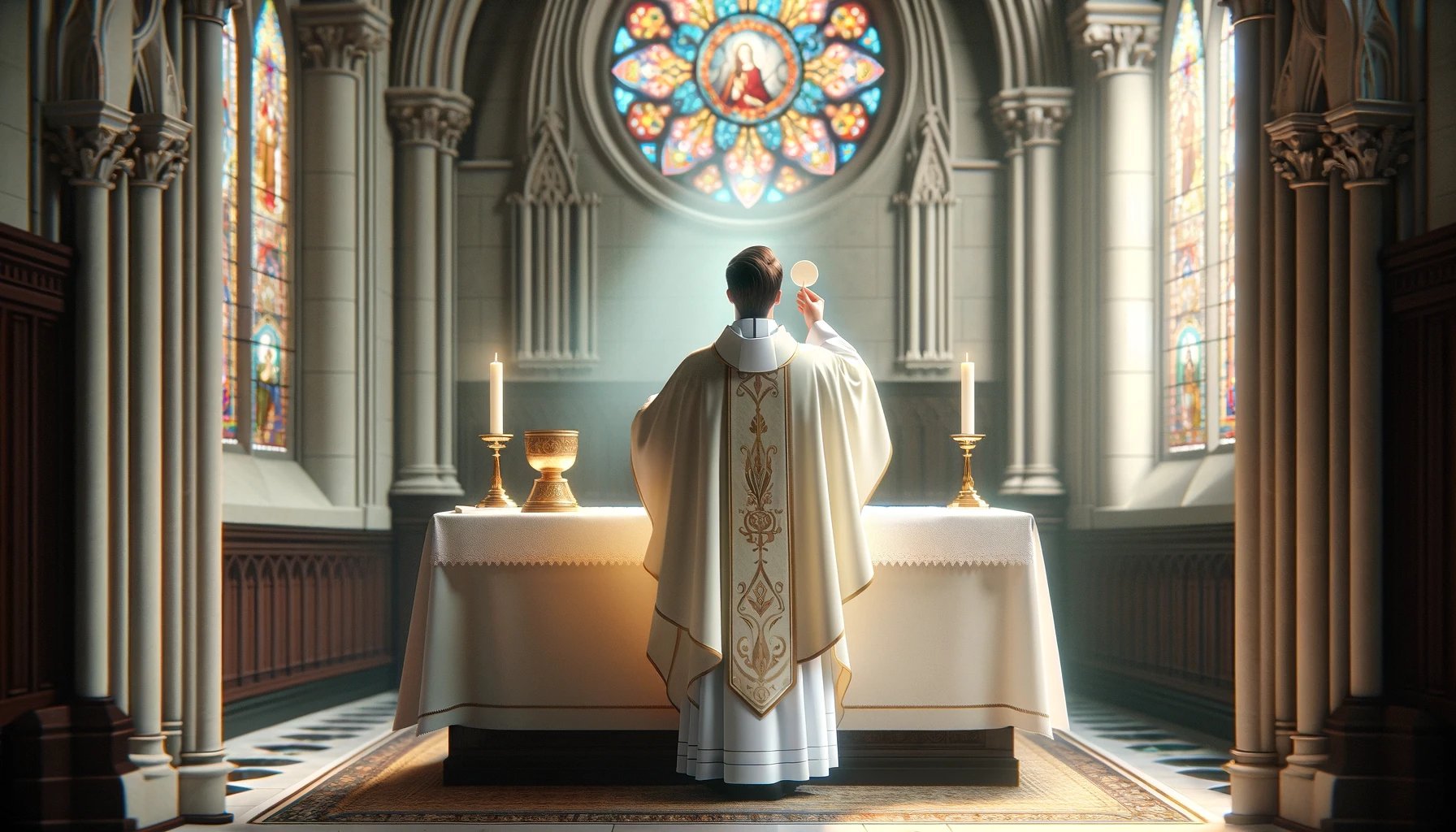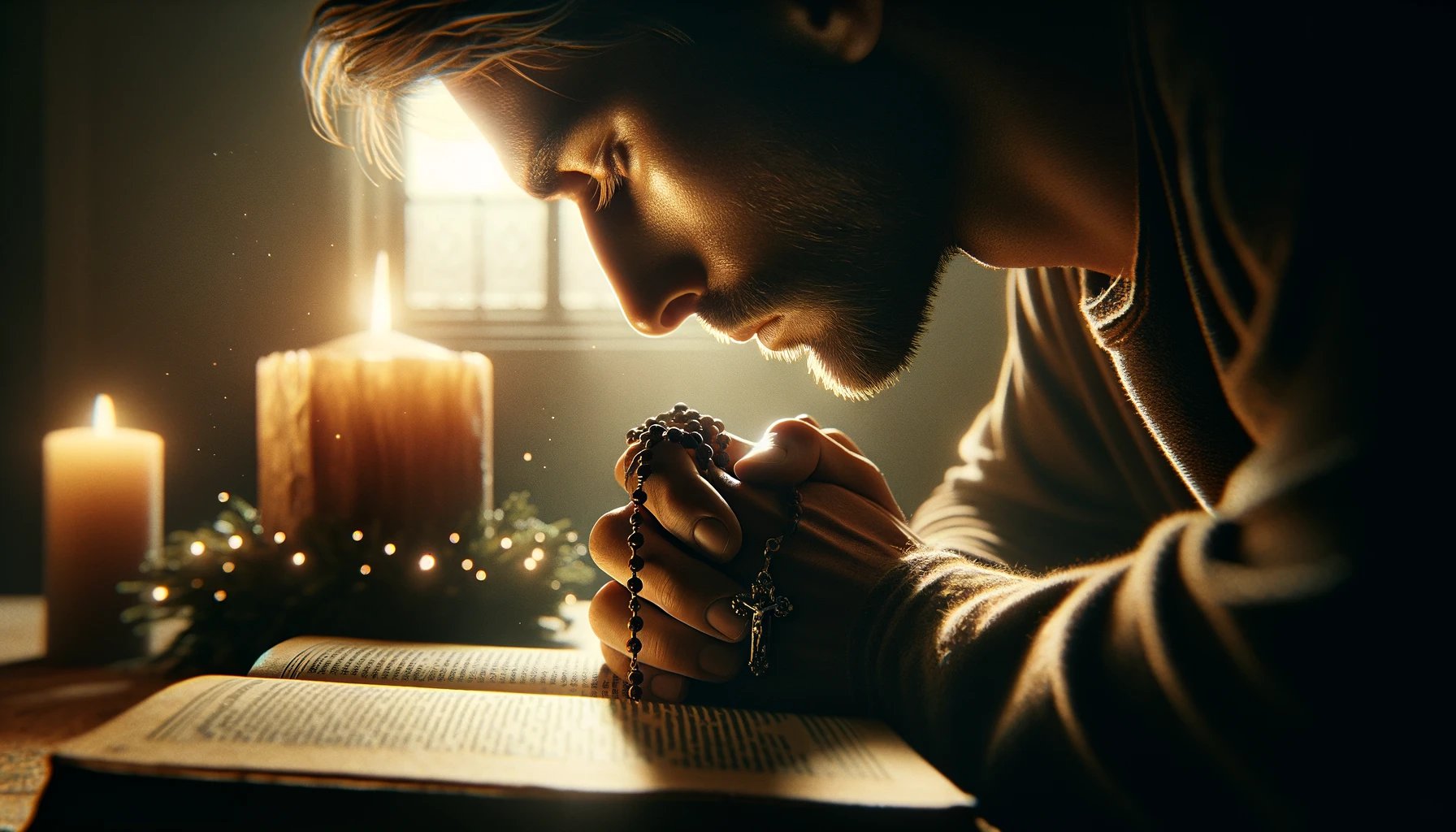Home>Special Themes>What Color Does The Priest Wear During Advent


Special Themes
What Color Does The Priest Wear During Advent
Published: February 14, 2024
Ericka Andersen, an editor at Christian.net, expertly merges digital strategy with content creation, focusing on faith and societal issues. Her communication skills enhance the platform's engaging narratives, fostering meaningful dialogue on belief's impact on society.
Discover the significance of the color worn by priests during Advent and other special themes in the liturgical calendar. Explore the symbolism and traditions associated with the use of special colors in religious ceremonies.
(Many of the links in this article redirect to a specific reviewed product. Your purchase of these products through affiliate links helps to generate commission for Christian.net, at no extra cost. Learn more)
Table of Contents
Introduction
Advent is a time of anticipation, reflection, and preparation in the Christian faith. It marks the beginning of the liturgical year and is a period of joyful expectation leading up to the celebration of the birth of Jesus Christ. During this sacred season, the church is adorned with symbols of hope, love, joy, and peace, as believers embark on a spiritual journey of introspection and spiritual renewal.
The observance of Advent dates back to the early centuries of Christianity, with its origins rooted in the Latin word "adventus," meaning "coming" or "arrival." It serves as a poignant reminder of the anticipation of the Messiah's birth and the anticipation of His second coming. As such, Advent holds profound significance for Christians worldwide, serving as a time of spiritual preparation and contemplation.
Throughout the centuries, various traditions and customs have emerged to mark the Advent season, including the lighting of the Advent wreath, the singing of hymns and carols, and the reading of biblical passages that foreshadow the birth of Jesus. These practices serve to deepen the spiritual significance of Advent, fostering a sense of unity and reverence within the faith community.
As the world outside the church walls becomes adorned with festive decorations and bustling with holiday preparations, the observance of Advent invites believers to embrace a spirit of mindfulness and reflection. It offers a counter-cultural perspective, urging individuals to pause amidst the hustle and bustle of the season and focus on the spiritual significance of Christ's birth.
In the following sections, we will delve into the rich symbolism and traditions associated with Advent, exploring the profound meanings behind its observance and shedding light on the significance of the liturgical colors that adorn the church during this sacred season. Join us on this enlightening journey as we uncover the spiritual depth and beauty of Advent.
The Meaning of Advent
Advent, a season of profound significance in the Christian faith, embodies a spirit of anticipation, preparation, and hope. It serves as a poignant reminder of the anticipation of the Messiah's birth and the anticipation of His second coming. Rooted in the Latin word "adventus," meaning "coming" or "arrival," Advent marks the beginning of the liturgical year and holds deep spiritual significance for believers worldwide.
At its core, Advent symbolizes the longing for the fulfillment of God's promises and the anticipation of the birth of Jesus Christ. It encompasses a period of joyful expectation, inviting individuals to embark on a spiritual journey of introspection, renewal, and preparation. As the world outside the church walls becomes adorned with festive decorations and bustling with holiday preparations, the observance of Advent offers a counter-cultural perspective, urging individuals to pause amidst the hustle and bustle of the season and focus on the spiritual significance of Christ's birth.
The four weeks of Advent are imbued with rich symbolism, each week representing a distinct theme: hope, love, joy, and peace. The lighting of the Advent wreath, a cherished tradition, serves as a visual representation of the progression through these themes, fostering a sense of unity and reverence within the faith community. As believers gather to light the candles and sing hymns and carols, the atmosphere is infused with a spirit of anticipation and reflection, setting the stage for the celebration of Christ's birth.
Moreover, Advent invites believers to engage in a period of spiritual preparation, aligning their hearts and minds with the profound significance of the Incarnation. It encourages individuals to cultivate a sense of mindfulness and reverence, fostering a deeper connection to the timeless story of the Nativity. Through the reading of biblical passages and the contemplation of the prophecies foretelling the coming of the Messiah, believers are invited to immerse themselves in the sacred narrative, embracing the hope and promise encapsulated in the birth of Jesus.
In essence, Advent serves as a sacred bridge between the past and the present, inviting believers to journey through the timeless story of Christ's birth while embracing the anticipation of His second coming. It embodies the essence of faith, hope, and love, infusing the hearts of believers with a sense of purpose and expectation. As the church adorned with symbols of hope, love, joy, and peace, the observance of Advent beckons believers to embrace the profound meanings embedded within this sacred season, fostering a spirit of unity and reverence within the faith community.
The Liturgical Colors of Advent
The use of liturgical colors holds deep symbolic significance within the Christian tradition, serving as visual markers that convey profound theological truths. During the Advent season, the liturgical colors employed in church decorations and vestments play a pivotal role in encapsulating the spiritual essence of this sacred time.
In the liturgical calendar, the color purple holds a prominent position during the season of Advent. Symbolizing penitence, preparation, and royalty, the use of purple evokes a sense of solemn anticipation as believers prepare their hearts and minds for the celebration of Christ's birth. This regal hue serves as a visual reminder of the majesty of the coming King, inviting believers to engage in a period of introspection and spiritual readiness.
Moreover, the use of purple during Advent also reflects the overarching themes of hope and expectation. As believers journey through the four weeks of Advent, the gradual lighting of the purple candles on the Advent wreath serves as a poignant visual representation of the progression toward the joyous celebration of Christ's birth. Each candle illuminates the path toward the fulfillment of God's promises, infusing the atmosphere with a sense of hopeful anticipation.
In addition to purple, the color rose holds special significance within the Advent season. Often employed on the third Sunday of Advent, known as Gaudete Sunday, the use of rose symbolizes a moment of joyful anticipation amidst the solemnity of the season. This vibrant hue serves as a beacon of hope and rejoicing, signaling the nearness of the long-awaited celebration of Christ's birth. Gaudete Sunday offers a respite from the penitential tone of Advent, infusing the faithful with a sense of joyful expectation as the anticipation of Christmas draws near.
The liturgical colors of Advent, with their rich symbolism and theological depth, serve to immerse believers in the profound significance of this sacred season. As the church adorned with purple and rose, the visual tapestry of colors invites believers to engage in a spiritual journey of introspection, hope, and joyful anticipation. Through the use of these vibrant hues, the Advent season comes alive with a sense of reverence and expectation, fostering a deep connection to the timeless story of Christ's birth.
In essence, the liturgical colors of Advent serve as a visual tableau of faith, hope, and anticipation, encapsulating the spiritual essence of this sacred season. As believers immerse themselves in the symbolism of purple and rose, they are invited to embrace the profound meanings embedded within the Advent season, fostering a spirit of unity and reverence within the faith community.
The Color of the Priest's Vestments during Advent
The color of the priest's vestments holds profound significance within the liturgical observance of Advent, serving as a visual representation of the spiritual themes and theological depth of this sacred season. During Advent, the priest's vestments are adorned with the rich hues of purple and rose, each color carrying its own symbolic weight and theological resonance.
The predominant use of purple in the priest's vestments during Advent aligns with the broader liturgical tradition, symbolizing penitence, preparation, and royalty. As the priest dons the regal purple vestments, the congregation is visually reminded of the solemn anticipation and spiritual readiness that characterize the Advent season. This deep, rich hue serves as a poignant visual marker, inviting believers to engage in a period of introspection and spiritual preparation as they anticipate the celebration of Christ's birth.
Furthermore, the use of purple in the priest's vestments during Advent reflects the overarching themes of hope and expectation. As the faithful journey through the four weeks of Advent, the gradual lighting of the purple candles on the Advent wreath serves as a powerful visual representation of the progression toward the joyous celebration of Christ's birth. The priest, adorned in purple vestments, becomes a living symbol of the hopeful anticipation that permeates the Advent season, guiding the congregation through a period of spiritual reflection and expectation.
In addition to purple, the priest's vestments may also feature the vibrant hue of rose, particularly on Gaudete Sunday, the third Sunday of Advent. The use of rose in the priest's vestments serves as a beacon of joy and rejoicing amidst the solemnity of the season, signaling the nearness of the long-awaited celebration of Christ's birth. As the priest dons the rose-colored vestments, the congregation is uplifted by a sense of joyful anticipation, embracing the respite from the penitential tone of Advent and embracing the imminent arrival of Christmas.
In essence, the color of the priest's vestments during Advent serves as a visual tableau of faith, hope, and joyful anticipation, encapsulating the spiritual essence of this sacred season. As the priest leads the congregation adorned in the symbolic hues of purple and rose, believers are invited to immerse themselves in the profound meanings embedded within the Advent season, fostering a spirit of unity and reverence within the faith community.
Conclusion
In conclusion, the observance of Advent stands as a poignant testament to the enduring significance of the anticipation of Christ's birth and the hopeful expectation of His second coming. This sacred season, marked by profound symbolism and rich traditions, invites believers to embark on a spiritual journey of introspection, preparation, and joyful anticipation. As the church adorned with the regal hues of purple and rose, the visual tapestry of liturgical colors serves as a compelling reminder of the spiritual depth and theological resonance of Advent.
Throughout the four weeks of Advent, believers are immersed in a tapestry of hope, love, joy, and peace, each theme encapsulated in the lighting of the Advent wreath and the progression of the liturgical colors. The use of purple, symbolizing penitence, preparation, and royalty, evokes a sense of solemn anticipation, urging individuals to align their hearts and minds with the profound significance of Christ's birth. The gradual lighting of the purple candles serves as a visual representation of the journey toward the joyous celebration of Christmas, infusing the atmosphere with a sense of hopeful expectation.
Moreover, the inclusion of rose on Gaudete Sunday offers a moment of respite and rejoicing, signaling the nearness of the long-awaited celebration of Christ's birth. This vibrant hue serves as a beacon of joy amidst the solemnity of the season, uplifting the faithful with a sense of joyful anticipation as Christmas draws near.
The color of the priest's vestments during Advent further amplifies the spiritual significance of this sacred season. As the priest dons the symbolic hues of purple and rose, the congregation is guided through a period of spiritual reflection and expectation, embracing the profound meanings embedded within the Advent season.
In essence, Advent serves as a sacred bridge between the past and the present, inviting believers to journey through the timeless story of Christ's birth while embracing the anticipation of His second coming. It embodies the essence of faith, hope, and love, infusing the hearts of believers with a sense of purpose and expectation. As the church adorned with symbols of hope, love, joy, and peace, the observance of Advent beckons believers to embrace the profound meanings embedded within this sacred season, fostering a spirit of unity and reverence within the faith community.
In conclusion, the observance of Advent offers a transformative experience, inviting believers to immerse themselves in the timeless narrative of Christ's birth and the hopeful anticipation of His return. As the liturgical colors of purple and rose adorn the church and the priest's vestments, the spiritual essence of Advent comes alive, fostering a sense of unity, reverence, and joyful expectation within the faith community.

